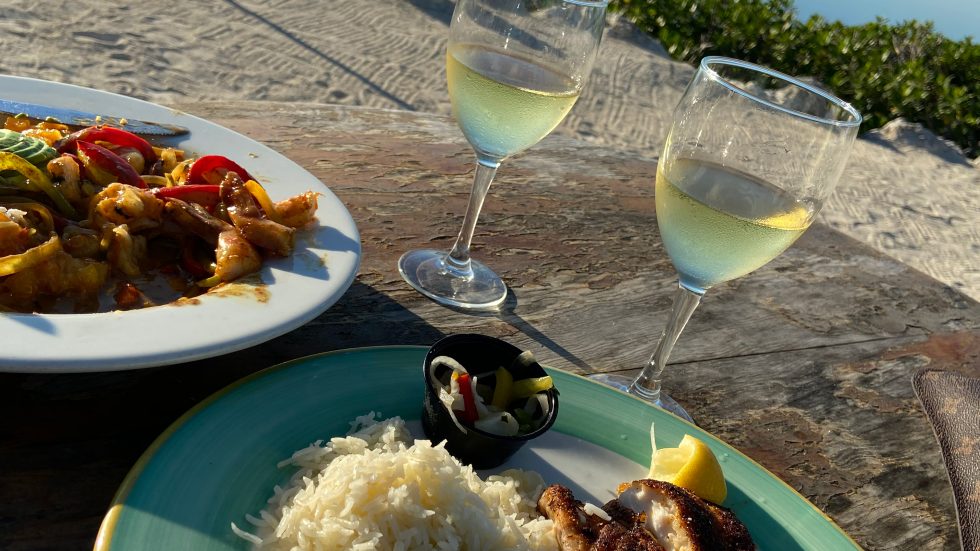Even with the advent of GPS, radar, weather tracking and other sophisticated safety and navigation systems, boat naming is considered serious business by otherwise non-superstitious professional and recreational mariners.
While the ancient Egyptians are credited with popularizing the practice of naming boats, it was the Babylonians who performed the first recorded boat christening in 300 BC, when an ox was sacrificed to appease the gods. The Vikings supposedly maked the occasion with human sarifice. The ancient Greeks had a more festive take on the matter, wearing wreaths of olive branches on their heads and pouring water on the boat to bless it. They saved the wine (a stand-in for blood) to drink toasts to the sea god Poseidon.
Breaking a bottle over a ship’s bow came into favor in the late 1700s, when the British navy replaced their expensive boat-naming ritual of “baptizing” vessels with water poured from a precious metal “standing cup” that was then tossed overboard. The use of champagne began in the 1800s, but bubbly wasn’t the only liquid used. The U.S. Navy launched warships with water from important rivers. This is also the period when the ceremony became a noteworthy event with crowds coming to view the birth of the boat. One of the largest, estimated at 15,000 attendees, was for the battle cruiser USS Maine on November 18, 1890. Ironically, the ship exploded off of Havana eight years later.
Over time, it became traditional for a woman to perform the christening, saying, “I christen thee (fill in the boat name).” Preferably, this would be a female with a strong swing, because if the bottle didn’t break, it was considered a bad omen and the boat considered unlucky. There are tales to this day that reinforce this superstition. One of the most notable involved a bottle that didn’t break when Prince Charles’ wife, Camilla, christened the new ocean liner Queen Victoria. Its maiden voyage was spoiled by the outbreak of a shipside virus.
Still, this was a better outcome than the Titanic, which was simply slid into the water without a formal naming ceremony. And we all know how that turned out.
Christening the Modern Boat
To increase the chance of years of safe and successful boating, today’s specialized boat-christening bottles are mechanically scored to ensure easy breakage and wrapped in a mesh bag to catch the broken glass.
The modern naming procedure hasn’t changed much in the past century. If the boat is still on land, break the bottle on it before it touches the water. If the boat was delivered via water, remember we’re living in modern times with modern constraints. There are speeches to Poseidon for those who want to really be on the safe side. They are too long to include here but can be found online.
Renaming a boat is another matter entirely. While some people will swear that renaming your boat will bring it nothing but bad luck, this is not the case. The first step in changing a boat name (after carefully picking a new name, as you don’t want to go through this procedure more than once) is to remove all traces of the previous boat name. This means more than removing it from the transom. Everything must go: key chains, custom coolers, matching family T-shirts…and don’t forget the documentation, maintenance logs, etc. In the case of paperwork, there are two options a) toss it entirely and get new log books or b) keep the vital records but cross out all references to the old boat name.
As we’re in the middle of the continent, we’re going to skip the advice on sailing over the equator backwards while throwing everything with the old boat name on it overboard. Instead we’re back to that old standby: champagne. At this point, if you don’t have a metal plate aboard with the old boat name on it, get a metal tag and write the old name on it with a Sharpie marker. Drop the symbolic old name off the bow into the waters below. Pour the champagne overboard to appease Neptune while splashing some on the boat hull. An alternative is to smash a bottle of champagne on the boat hull, so Neptune and the boat both get their appropriate portions.
Then, while you’re surrounded by family and friends, christen your boat as if it was the first time. If the new boat name had to be put on the transom prior to the renaming, keep it covered until this point. Now, you can start bringing items with the boat’s new name on them on board.




